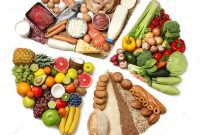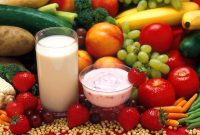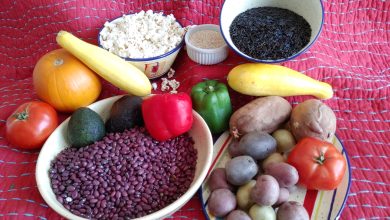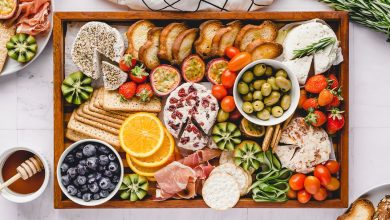Healthy eating for teenagers
Properly selected nutrition for adolescence (from 10-14 years to 18 years) is of great importance in the formation of a healthy maturing organism. During this period, serious, significant changes occur in the reactions of the body to various environmental factors, body weight grows, there is a significant growth of tissues.
maturation of body systems, as well as puberty. In the period from ten to thirteen years, the body grows rapidly, from thirteen to sixteen years – there is an active formation of endocrine glands, a number of parts of the brain are being formed. The obvious uneven maturation of different body systems during this period leads to increased fatigue, irritability, excitability and negativism.
According to statistics, approximately 30% of chronic diseases in adolescents who study in educational institutions are directly related to improper, unsatisfactory nutrition.
Recently, the number of metabolic disorders (obesity), diseases of the gastrointestinal tract and anemia among adolescents has increased.
There is also a lack of vitamins C, B1 and B2, calcium, iron, beta-carotene, zinc, iodine, dietary fiber and polyunsaturated fatty acids.
A very important principle of rational teenage nutrition is compliance with the correspondence of the caloric content of the diet to the energy costs of the body.
Teenagers have a much higher energy expenditure than adults. The need for energy and nutrients in girls and boys is different: the energy value of the diet of girls is 2600-2990 kcal, boys – 3000-3450 kcal.
Lack of calorie content of the diet turns into rapid exhaustion and dysfunction of all systems and organs.
The main guarantor of a balanced diet is its maximum variety.
A balanced teenage diet is achieved by including in the diet a diverse list of products of plant and animal origin. In the daily diet of a teenager, it is necessary to include vegetable and butter, meat, milk, sour-milk drinks, as well as wheat and rye bread (at every meal). Eggs, fish, cottage cheese and cheese can be included in a week – two or three.

It is also important to balance the diet of adolescents in terms of the content of the main nutrients: fats, proteins, carbohydrates, minerals and vitamins.
Rational nutrition provides for the following ratio: proteins, fats, carbohydrates – 1:1:4
Proteins are the main component of any living cell – they are necessary to build the tissues and organs of our body: blood, muscles, brain, nerves, heart, etc. Energy consumption in adolescents should be provided by proteins (about 14%), fats (about 31% ) and carbohydrates (about 55%).
Complete animal protein can be obtained from milk, dairy products, eggs, fish, and meat. They are absorbed by 93-96%. Their share in our daily diet should be 60% of the total amount of proteins.
You can get complete plant-based protein from grains, fruits, and vegetables. They are absorbed by about 62-96%.
Fats are the main providers of energy. In addition, fats increase the nutritional and taste properties of our food, provide a feeling of satiety, and maintain a normal state of immunity. It is with fats that unsaturated and saturated fatty acids enter the body.
Fats are a valuable source of fat-soluble vitamins A, E, K, D and phosphatides (lecithin), which are essential for proper development and growth. Complete fats can be obtained from meat, fish, butter, sour cream. The “valiant” supplier of unsaturated fatty acids is sunflower oil.
Carbohydrates, like fats, are the main sources of energy in our body. They are found mainly in cereals, bread, potatoes, berries, fruits and vegetables. During the day (with proper nutrition), a teenager should receive about 500 grams of carbohydrates.
We should also mention the great importance of water for the nutrition of a teenager, because it is water that is part of the cells and tissues of the human body, it provides about 65% of the mass of the human body. Together with food, a teenager needs 50 ml of water per 1 kilogram of his body weight.

Vitamins are an indispensable part of food. They enter our body with food and are required for the normal functioning of metabolism, the production of hormones, the formation of enzymes, for the growth process, as well as for the restoration of cells and tissues. The main sources of vitamins are, of course, plant foods.
Calcium is the basis for building our bone tissue. Calcium-rich foods include dairy products, nuts, vegetables, egg yolks, oats, and buckwheat.
The absorption of calcium by the body depends on the content of magnesium and phosphorus. The main suppliers of phosphorus are cheese,
brains, liver, fish, nuts, beans, cereals. The ratio of phosphorus and calcium is 1:1.5. In a certain amount, the body of a teenager needs iron, potassium, sodium, chlorides, chromium, zinc, copper, manganese, selenium, molybdenum, fluorine and iodine. With insufficient intake of iodine in the body, there is a violation of the function of the thyroid gland, growth retardation, as well as mental development.
An unbalanced diet contributes to the development of obesity, diabetes mellitus, hypertension and lag in physical development.
Deficiency of micronutrients – trace elements, vitamins and polyunsaturated fatty acids leads to the development of an immunodeficiency state.
The organization of a balanced diet for a teenager provides for the observance of a certain daily routine, in particular, a clear meal schedule.
Eating at the same time helps maintain a good appetite, promotes the timely release of gastric juice. A teenager should eat at least four to five times a day.
therefore, every three to four hours. The last meal is recommended by pediatricians two hours before bedtime. The correct diet of a teenager provides for: regular, fractional and uniform food intake; strict observance of meal times; rational distribution of food by volume, mass and calorie content. Ensuring the required amount of food is a serious condition:



